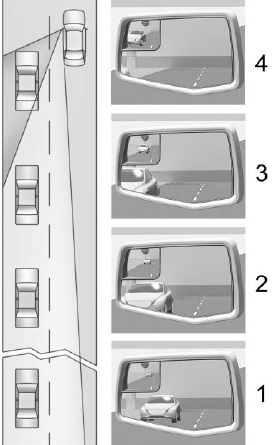Chevrolet Silverado: Driving Information / Braking
Braking action involves perception time and reaction time. Deciding to push the brake pedal is perception time. Actually doing it is reaction time.
Average driver reaction time is about three-quarters of a second. In that time, a vehicle moving at 100 km/h (60 mph) travels 20m (66 ft), which could be a lot of distance in an emergency.
Helpful braking tips to keep in mind include:
- Keep enough distance between you and the vehicle in front of you.
- Avoid needless heavy braking.
- Keep pace with traffic.
If the engine ever stops or a brake fault occurs, the brakes may lose power assist. More effort will be required to stop the vehicle. It may take longer to stop.
 Drunk Driving
Drunk Driving
Death and injury associated with drinking and driving is a global tragedy.
Warning
Drinking and then driving is very dangerous. Your reflexes, perceptions,
attentiveness, and judgment can be affected by even a small amount of alcohol...
 Steering
Steering
Caution
To avoid damage to the steering system, do not drive over curbs, parking
barriers, or similar objects at speeds greater than 3 km/h (1 mph)...
Other information:
Chevrolet Silverado 2019-2025 Owners Manual: Drunk Driving
Death and injury associated with drinking and driving is a global tragedy. Warning Drinking and then driving is very dangerous. Your reflexes, perceptions, attentiveness, and judgment can be affected by even a small amount of alcohol. You can have a serious — or even fatal — collision if you drive after drinking...
Chevrolet Silverado 2019-2025 Owners Manual: Adding Equipment to the Airbag-Equipped Vehicle
Adding accessories that change the vehicle's frame, bumper system, height, front end, or side sheet metal, may keep the airbag system from working properly. The operation of the airbag system can also be affected by changing, including improperly repairing or replacing, any parts of the following: Airbag system, including airbag modules, front or side impact sensors, sensing and diagnostic module, or airbag wiring Front seats, including stitching, seams, or zippers Seat belts Steering wheel, instrument panel, overhead console, ceiling trim, or pillar garnish trim Inner door seals, including speakers Your dealer and the service manual have information about the location of the airbag modules and sensors, sensing and diagnostic module, and airbag wiring along with the proper replacement procedures...
Categories
- Manuals Home
- 4th Generation Silverado Owners Manual
- 4th Generation Silverado Service Manual
- E85 or FlexFuel
- Head-Up Display (HUD)
- Electric Parking Brake
- New on site
- Most important about car
Blind Spot Mirrors
If equipped, there is a small convex mirror built into the upper and outer corner of the driver outside mirror. It can show objects that may be in the vehicle's blind zone.
Driving with the Blind Spot Mirror

Actual Mirror View
When the approaching vehicle is a long distance away, the image in the main mirror is small and near the inboard edge of the mirror. As the vehicle gets closer, the image in the main mirror gets larger and moves outboard. As the vehicle enters the blind zone, the image transitions from the main mirror to the blind spot mirror. When the vehicle is in the blind zone, the image only appears in the blind spot mirror.